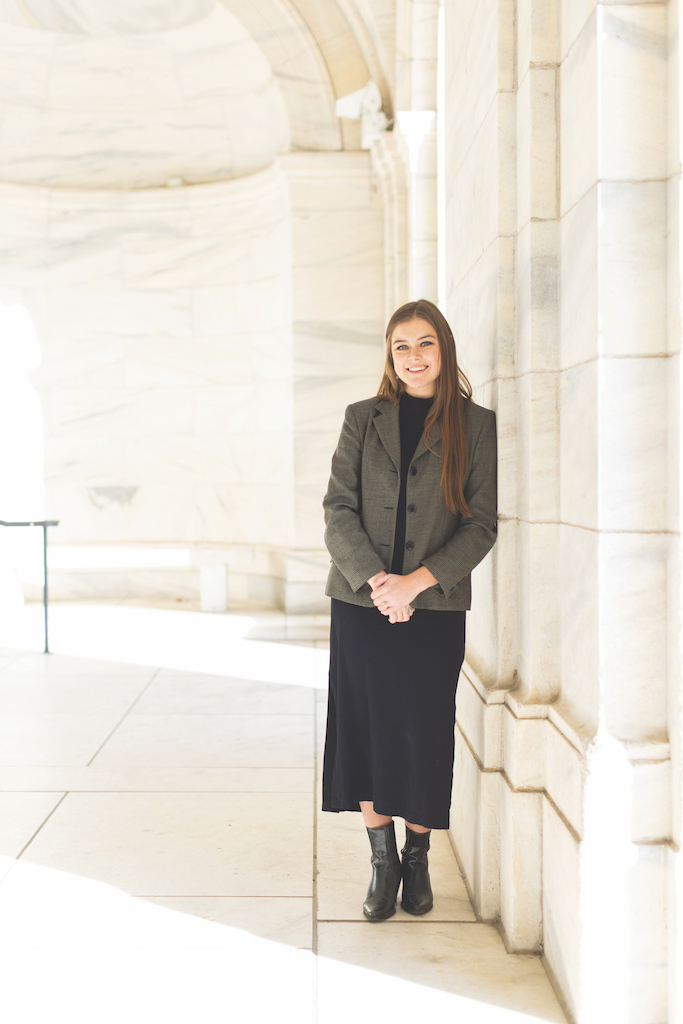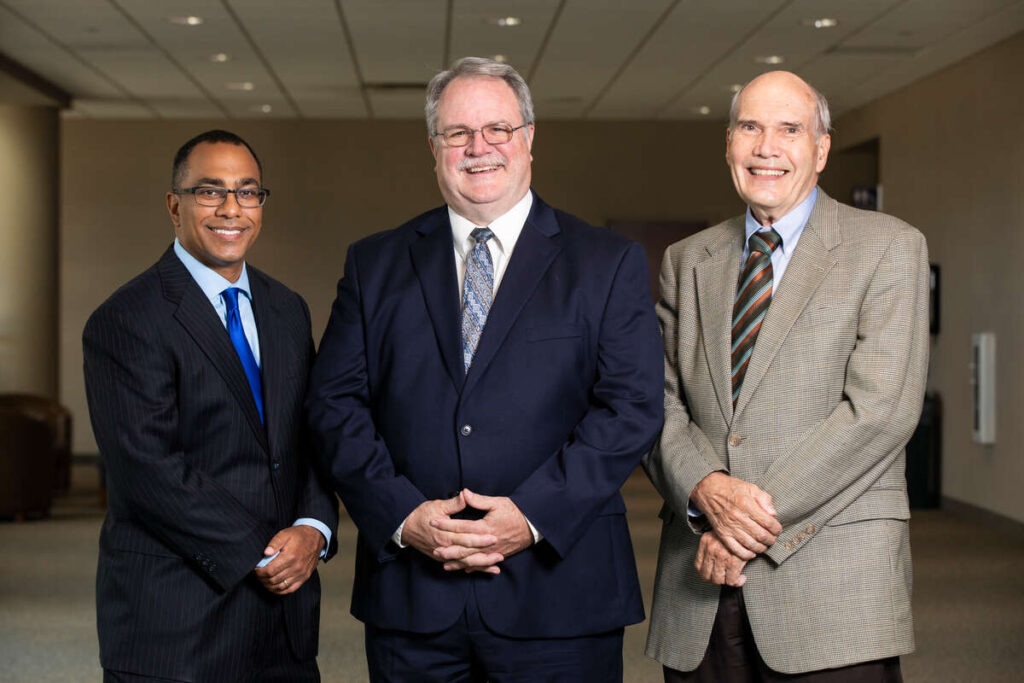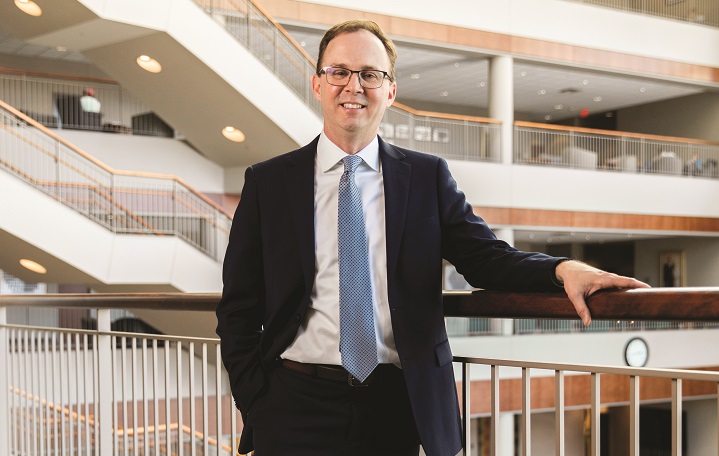In May 1995, a group of nearly 200 religious leaders of multiple faiths issued a sharp statement calling for reversal of the U.S. Patent Office’s recent decision to issue patents on portions of the human genome and on several genetically engineered animals (most notably, a laboratory mouse especially susceptible to cancer). “[H]umans and animals are creations of God, not [of] humans,” the statement said, “and as such should not be patented as human inventions.”1
Fast forward 20 years. Remarkable advances have occurred in genetic technology: the mapping of the human genome, the development of thera- pies for harmful gene mutations, the artificial engineering of high-yield and disease-resistant crops. Over the same period, the private ownership of genetic technology also steadily advanced. The Patent Office issued thousands of patents on living matter – human gene sequences, genetically modified plants and animals – and on various processes for manipulating such matter. Until 2013, that is – when the U.S. Supreme Court held that patents on many gene sequences were legally invalid because they covered “natural phenomena” occurring in the body, rather than inventions by scientists.2 The Court’s decision, which invalidated several controversial patents on the gene sequences associated with breast cancer, left uncertainty about just what forms of gene technology could be rewarded with a patent.
Meanwhile, biotechnology marches forward, with new “synthetic biology” technologies enabling researchers to edit genes on a larger scale than ever before and to use software to construct new genomes. Although the Supreme Court’s decision limited patents on life forms, some of the methods that the religious critics of biotechnology feared back in 1995 may soon come to fruition.
These developments were fresh when, in September 2015, a group of thinkers from Europe and the United States met at a conference at Cambridge University, England, to examine the legal, religious and social-justice implications of “patents on life.” The conference was co-sponsored by two institutes focused on Catholic thought: the Von Hugel Institute at St. Edmund’s College, Cambridge, and the Murphy Institute for Catholic Thought, Law, and Public Policy here at the University of St. Thomas. The participants were a unique interdisciplinary roster: legal scholars, patent lawyers and judges, bioethicists, theologians and Vatican and American Catholic officials. A look at the conference discussions helps illuminate the pressing questions posed by biotechnology patents and the insights on those questions offered by Catholicism and other religious traditions.
Maintaining a balance
Begin with the legal background. A patent gives its holder a 20-year right to exclude anyone else from making, selling or using the patented invention. This right – a legally recognized, lim- ited monopoly – encourages innovation by keeping up prices, enabling the inventor or company to recoup the costs of research and development. But the increased price also can cause harm to others, especially to the poor. Patents helpful in the development of AIDS and malaria drugs too often have blocked the distribution of affordable generic versions in African nations. When Myriad Genetics’ patent on gene sequences was invalidated, the price the company charged for breast-cancer tests fell, quickly, by almost half.
Patent law therefore must balance encouraging valuable innovation with maintaining others’ access to its benefits. To strike the balance, the law permits patents only for inventions that make a “nonobvious” advance over previous technology and also have a specific, concrete utility. But in addition, social-justice advocates – including the Catholic Church – have argued for limiting patent rights where needed to ensure access to medicines, food and other necessities. For example, Pope Benedict criticized an “excessive zeal” for patent rights among multinational corporations, and Pope John Paul II, speaking of medical patents, stressed that “[t]he law of profit alone cannot be applied to that which is essential for the fight against hunger, disease and poverty.”
No patents on natural phenomena
Patents are subject to another important limit. The Supreme Court has said they are available for “anything under the sun made by man” – but the corollary is that no one can claim patent ownership of a natural material or a law of nature. I cannot patent a plant I discovered deep in the rain forest, no matter how much effort and ingenuity it took to find it. All persons may use such “building blocks” of nature for their own innovations. In Myriad Genetics, the Court held that the breast-cancer DNA sequence was a natural phenomenon occurring in the body; the mere fact that the company had isolated it from the rest of the genome did not make it an invention. But by contrast, the Court approved patents covering “cDNA,” an artificial version of the sequence that removes certain portions that do not “code” for genetic information. The Court held that the altered sequence was a patent- able invention.
From a religious perspective, the bar on patenting natural things is not simply a matter of preserving “building blocks” so others can innovate at lower cost. The bar also reflects a proper humility toward creation, which – as the gene-patent critics emphasized in 1995 – is the work of God, not human beings. At the conference, law professor Joshua Sarnoff from DePaul University reviewed how his- toric Judeo-Christian religious beliefs in divine creation helped support a scientific ethic of sharing discoveries freely – an ethic increasingly giving way to one of commercial exploitation. At the same time, in biotechnology the line between natural phenomena and human invention is not easy to draw; some substances are artificially created precisely to match genetic features in the human body.
Patents and morally objectionable technologies
Natural phenomena are not the only things that should be barred from patents. Even if a substance or process is clearly an invention, it arguably should be refused a patent if it contravenes fundamental principles of morality. The government should not, for example, confer a patent on a new form of torture chamber. In the biotechnology field, there’s widespread agreement that one should never be able to get a patent on a cloned human being. The principle of human dignity forbids such ownership of human persons.
But when precisely should immorality serve as the basis for refusing a patent? A central focus of the conference concerned transatlantic divergence on this question. Europe takes moral limits on patents more seriously than America does: Europe explicitly bars patents on inventions “contrary to ‘public order’ or morality,” as well as inventions concerning “uses of human embryos for industrial or commercial purposes.”3 Under the latter provision, Europe has refused patents not just on embryos but on embryonic stem cells, because the process for creating them destroys embryos.4
In America, by contrast, morality-based limits are essentially nonexistent: we “patent first and ask questions later,” in the words of conference speaker Margo Bagley from the University of Virginia Law School.5 This partly reflects America’s resolute commitment to private-property rights. At our conference, patent scholar Paul Heald from the University of Illinois traced how such faith in private property helped cause America’s conservative Christians to mute their objections to gene patenting – the objections that a number of them asserted so forcefully back in 1995.
Even in Europe, morality limits on patents pose difficult questions. Several speakers, including Cambridge professor Kathy Liddell and former European patent judge Christopher Rennie-Smith, traced the confusing rulings interpreting the key terms “morality” and “public order.” Another European legal scholar, Ingrid Schneider, discussed how Europe’s ban on embryo-related patents will be challenged by developments in synthetic biology – for example, “synthetic embryos” created to bear the DNA of two same-sex partners or the DNA of one genetic parent (conjoining male and female germ cells from that parent). Nevertheless, despite such com- plications, America could learn much from Europe’s commitment to treating morality as relevant to patent law.
Life patents and traditional community practices
Some gene patents contribute to arrangements that exploit or threaten the way of life of vulnerable groups. Indigenous peoples have been deprived of benefits from their own DNA, or that of plants they’ve used for traditional remedies, when multinational corporations turn those materials into patentable medicines or treatments. Farmers around the world face powerful incentives to use genetically modified (GM) crops, which offer economic advantages but also may bring with them onerous license restrictions effectively dictated by patent-holding seed companies. The licenses may interfere with traditional crop breeding, or give companies intrusive power to inspect farmers’ lands. At the conference, Michael Kock, general counsel for the agribusiness firm Syngenta, described a more equitable licensing arrangement now used by many GM-seed producers, involving reasonable remuneration terms and freedom for farmers to engage in traditional crop breeding.
Themes from the conference
The Cambridge conference showed how religious thought can make valuable contributions to debates over patents on life. Catholicism is well suited for these conversations, with its bedrock commitment to the dignity of human life, its history of reflection on the purposes and limits of private property, and its global network of institutions serving the poor and vulnerable. The conference brought together leading voices from both religious and secular spheres. At a coffee break, one might see Archbishop Silvio Tomasi, the Holy See’s permanent observer to world organizations in Geneva, conversing with a patent judge, legal scholar or biotechnology lawyer.
The conference also showed that the relationship between life patents and human dignity is complex. One cannot simplistically dismiss all patents in the genetic area as “playing God.” Christianity calls for us not to leave nature alone, but to exercise stewardship for the common good: as Pope Francis wrote in his recent environ- mental encyclical, “The modification of nature for useful purposes has characterized the human family from the beginning.”6 Biotechnology can surely promote human dignity by producing new medicines and therapies; patents can provide important incentives for such innovations. And patent law, when properly interpreted, does not confer ownership over human life. It confers only a limited control over artificially created substances that correspond to a short, specific portion of the genome – arguably analogous to a patent on a form of artificial hip or heart.
But biotechnology, in the Pope’s words, also gives those with knowledge and economic resources “an impressive dominance over the whole of humanity,” and “nothing ensures that [such power] will be used wisely.”7 Thus patents related to living things still must be subjected to limits based in morality and the equal dignity of all persons. That means first (as all our conference speakers emphasized) that governments must continue to ban patents on natural products and processes, on human beings and on human organs.
Second, even when biotechnology patents are appropriate, the effects of such technologies must be regulated to ensure they produce benefits, not harms. Some of these measures will be necessary to ensure that everyone has sufficient access to vital innovations. For example, if patents promote beneficial but expensive medicines and treatments, society must take steps to ensure that those benefits are available to the poor, not just the wealthy. (Ensuring access for poor might come through strengthening the public-health system, if not through directly limiting patent rights.) Other regulations are needed to prevent other potential harms from biotechnology, such as terrorist uses of dangerous new viruses, or discrimination based on genetic traits in employment, insurance and other contexts. And indigenous peoples in general, and farmers in particular, should be protected from abusive practices by multinational biotechnology companies.
We aim to publish papers from the conference and so pave the way for conversation on these wide-ranging issues among lawyers, ethicists and theologians. For help in organizing this important conference, I thank, from the Von Hugel Institute, conference co-chair Dr. Roman Cholij, Dr. Simon Ravenscroft and Dr. John Loughlin; and from the Murphy Institute, institute co-director Professor Lisa Schiltz, program coordinator Seanne Harris and Murphy student fellow Morgan Fuller ’17.
Thomas C. Berg, the James L. Oberstar Professor of Law and Public Policy at the University of St. Thomas School of Law, teaches intellectual property, constitutional law and law and religion. He co-chaired the Cambridge and the University of St. Thomas School of Law conference on “Patents on Life.”
1 This “Joint Appeal against Human and Animal Patenting” is quoted and poor might come through strengthening discussed/critiqued in Audrey Chapman’s Religious Contributions to the Debate on the Patenting of Human Genes, 10 U. St. Thomas L.J. 650 (2013), available at https://ir.stthomas.edu/ustlj/vol10/iss3/5/.
2 Association for Molecular Pathology v. Myriad Genetics, 133 S. Ct. 2107 (2013).
3 European Patent Convention, art. 53(a); id., Rule 28(c).
4 Bruestle v. Greenpeace, C-34/10 (Ct. Just. EU Oct. 18, 2011).
5 Margo Bagley, Patent First, Ask Questions Later: Morality and Biotechnology in Patent Law, 45 Wm. & Mary L. Rev. 469 (2003).
6 Laudato Si #103.
7 Id. #104.
Read more from St. Thomas Lawyer.





